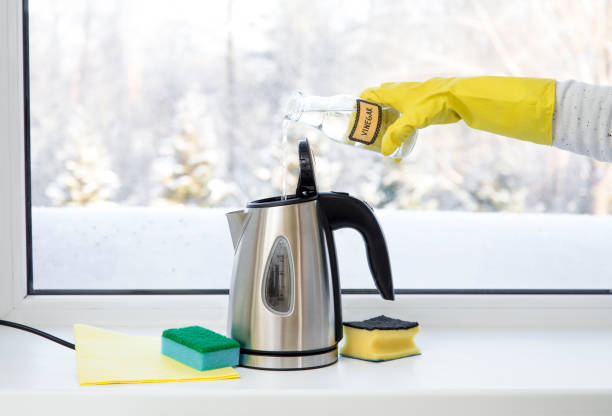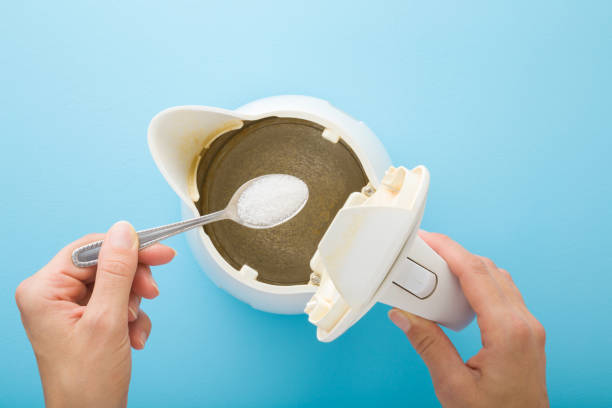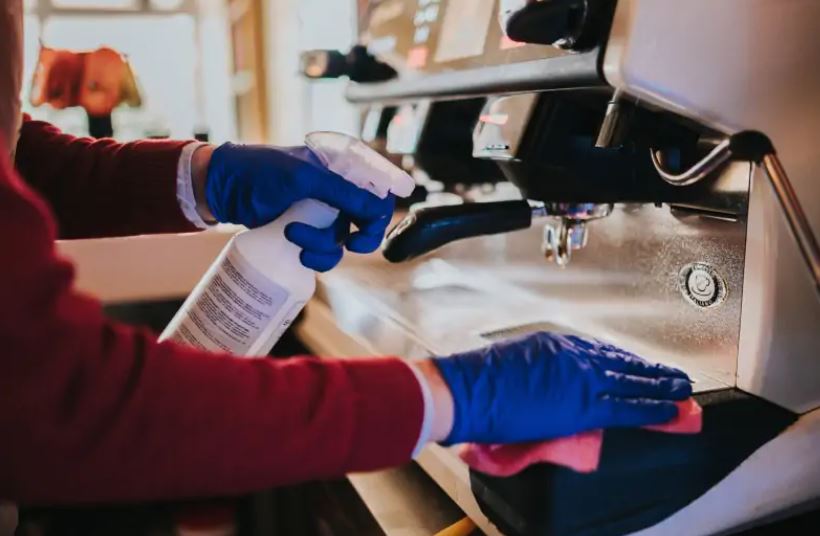Now descale the washing machine and dishwasher with natural home remedies. With our instructions, you can descale your washing machine and dishwasher properly and prevent damage. Consequently, you should remove limescale deposits regularly.
Calcified household appliances no longer work properly, they consume more electricity and break down more quickly. You should therefore descale your washing machine and dishwasher regularly. This saves hassle, time, and money. Remove limescale deposits with vinegar, lemon, and co.
Hard water leads to limescale deposits

Hard water can attack electronic devices. Especially after a long period of time, limescale deposits on all components that come into contact with tap water: hoses, heating elements, spray arms. The hotter a component gets, the faster it calcifies. The heating elements in washing machines and dishwashers are therefore particularly affected. How strong depends on the temperature and the degree of hardness of your tap water.
How often do you descale the machines?
If you have hard water, you should descale your devices two to three times a year. But if your water is soft, it is sufficient to remove limescale deposits from the washing machine and dishwasher once a year. This usually does not require any special cleaners or decalcifiers, simple and natural household remedies can often remove limescale effectively. Please also note our tips for cleaning the bathroom and removing limescale.
Prevention of limescale deposits
A dash of vinegar with each wash protects against limescale deposits and makes your laundry fresh and soft. In addition, you can occasionally add a packet of baking soda or baking soda to the normal wash or rinse cycle. The following applies to the dishwasher: Even if you use dishwasher tabs that already contain water softeners, you should always use coarse special salt.
Instructions for descaling the washing machine
It doesn’t take much to descale your washing machine. You can follow our simple step-by-step instructions for this. You should also clean your washing machine regularly.
Home remedies to remove limescale
If you want to do without too many chemicals in the household, you can use environmentally friendly and inexpensive household remedies. Because it can be used to remove limescale from your devices just as easily. You can also use natural home remedies to descale your kettle. Or clean and descale your sink with simple household items. The following home remedies are good for removing limescale deposits:
1) Descale with citric acid
The use of citric acid can effectively dissolve limescale deposits on household appliances. You can buy lemon juice concentrated cheaply in small yellow plastic lemons at any grocery store. Then, to descale the washing machine, dissolve the contents of a plastic lemon in 0.5 liters of water and pour the mixture into the drum as described above. To descale the dishwasher, fill the undiluted concentrate into the powder compartment up to the edge.
2) Vinegar against limescale
Using vinegar can also descale your washing machine. But it also has disadvantages. Because most manufacturers of washing and rinsing appliances point out that vinegar could attack the seals and plastic hoses of the appliances. Nevertheless, many swear by the inexpensive limescale remover. To descale, pour 0.5 liters of household vinegar directly into the machine, as described above, and start a washing or rinsing program that is as hot as possible. When using vinegar essence, a quarter of a liter is enough.
3) Use the home remedy baking soda

Although using the household remedy baking soda alone does not dissolve limescale, it does make the water softer. This way you can avoid limescale deposits. In combination with vinegar, baking soda becomes a sparkling clean. Soda strengthens the lime-dissolving effect of the acetic acid and also frees the machine from soap and grease residues. Consequently, a good household remedy for washing machines and dishwashers.
4) Commercial descalers
You can also descale your devices with special cleaners. Because the specialist trade offers a variety of descalers that can remove limescale deposits from your device quickly, efficiently, and thoroughly. You should definitely observe the respective instructions for use. You can also find many types of descalers on the Internet, such as descaling coffee machines.





